Welcome to Old School Month on Eternal Central. We’re looking at a different Old School 93-94 deck each day of the month. Today’s deck is 5 Color Underworld Dreams Combo, appropriately named for trying to kill the opponent with Underworld Dreams.
I have been playing various iterations of Underworld Dreams combo in Old School for a few years, experimenting with different color combinations and card configurations each time I play it. Here is a version I recently played in a 94-94 get together in Milwaukee (Wisconsin, USA) not too long ago.
Played 5C Dreams Combo at #OldSchoolMTG Milwaukee Madhouse event yesterday. Won most of my games, from what I remember between JagerBombs. pic.twitter.com/3UntBHCfhQ
— Jaco (@JMJACO) May 15, 2017
Constructing 5C Underworld Dreams Combo
The more colors you play in your deck, the more inconsistency you generally introduce – but this cost comes with the obvious benefit of additional deck building options. I consider Underworld Dreams, Dark Ritual, and Winds of Change to be the core cards for most Dreams combo decks. After that, it’s really up to you what direction you want to take the deck in. Do you want it to be a combo control deck, or an aggro-combo deck, or a straight combo deck? The following decklist that we’ll delve in to in this primer is my latest experiment, and is more along the lines of straight combo, with minimal control elements.
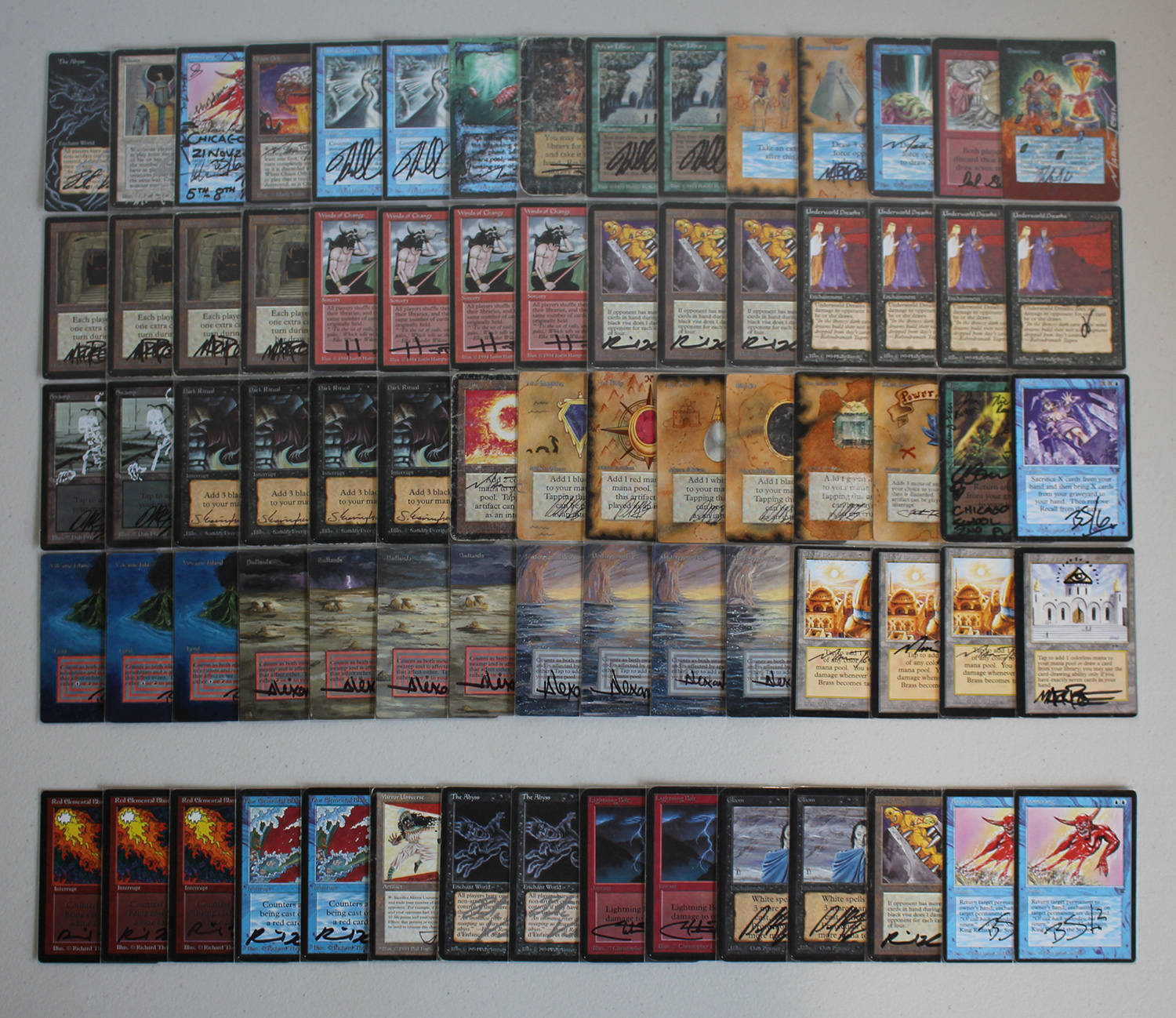
Creature Choices
Most versions of Dreams Combo that I play contain zero creatures. This helps create a small amount of virtual card advantage, because the opponent will typically have some amount of dead cards in their main deck that would normally deal with creatures, such as Swords to Plowshares, The Abyss, or Terror. The other benefit of going this direction is that you are more focused on your ambitions of comboing the opponent out, and can build you deck with more synergies with this in mind.
The possibility of playing creatures in the sideboard, such as Guardian Beast, Juzam Djinn, or Serendib Efreet can always be enticing, as an option to give you an alternative avenue of attack after the opponent has theoretically sideboarded out most or all of their creature removal.
Kill Conditions
Underworld Dreams is the most common kill condition, but an alternate kill condition that fits in many variants of this deck is Black Vise. If you are hoping to make players draw cards with Howling Mine or draw 7 spells for example, Black Vise can help end the game, and provide insurance against the opponent simply being able to deal with just your Underworld Dreams.
Another kill condition that may be suitable for this deck is Mirror Universe, with or without something like Fireball or Earthquake to immediately finish the opponent off. I like this as another axis to battle on, because Mirror is rarely dead by itself, providing a buffer against aggressive decks, and can let you prolong the game if need be. It can easily be cast ahead of curve with all of the fast mana in the deck.
Draw Engines
I have found the best draw engine for this strategy to be Howling Mine, for its synergy with all of the fast mana, Underworld Dreams, and Black Vise. You are more likely to draw game-ending spells with each additional extra draw than your opponent is, especially the more narrowly tailored your combo deck is.
The “standard” Restricted List package of Ancestral Recall, Time Walk, twister, and Wheel of Fortune are all present, as are Winds of Change. These all represent the ability to “combo off” when you have one or more Underworld Dreams in play. Timetwister is at its best in this particular deck, and it is the best card in the deck. When you have the option to cast Winds of Change for 5+ or Timetwister or Wheel of Fortune, it is often best to cast the Winds of Change first, so that you will eventually be drawing towards the Twister/Wheel at a later time, especially since Timetwister can refuel the deck and your most broken spells that have already been cast, destroyed, or countered. The obvious caveat to this is that if casting Wheel or Timetwister would definitely win you the game (as opposed to Winds of Change), that would be the choice instead.
Part of the reason I have chosen to adopt all five colors for this version is for the possibility of playing both Regrowth and Sylvan Library. We’ll touch on Regrowth more a bit later, but Sylvan Library is incredibly powerful in this deck, allowing you to see far more cards than the opponent would, while digging for that essential mana or combo piece. It also pairs very nicely with Howling Mine, as the more cards you draw with Howling Mine, the deeper you also get to dig with Sylvan. For example, if you have 2 Howling Mines and Sylvan Library in play, you may draw 5 cards during your draw step, and then put 2 back on top of your deck without penalty.
Designing the Sideboard
While the possibility of a transformation sideboard for this deck may be enticing, I prefer to simply use it as a toolbox for adding a few cards here and there to better combat the enemy. You want to be careful not to over-sideboard with this deck, as the main deck is quite tight.
Gloom is a great answer to decks that are simply relying on Disenchant to not flat out lose to your Underworld Dreams. You don’t have to mulligan to it or anything, but it is a great card that can often be cast on the first or second turn with all of the mana accelerants in the deck, and has the added bonus of effectively giving you tons of extra turns against decks like White Weenie.
Main deck removal is a question that you will have to consider, and decide what configuration you want to use, so you don’t necessarily get run over by the fastest aggressive strategies. In the version pictured above, I have chosen utilize Balance, The Abyss, Chaos Orb, and Boomerang as my removal package. Balance is incredibly broken in this deck, and it or The Abyss is a frequent tutor target when playing against creature-heavy decks. Boomerang is an interesting card that can bounce an opposing Underworld Dreams before going off, or can be cleverly used to bounce an opponent’s annoyance on their end step, and then you can cast a Winds of Change or draw 7 to get rid of it for good. I have more removal in the sideboard to side in against fast creature decks, as well as more Boomerangs for Underworld Dreams decks.
Beyond this, Red Elemental Blast is very efficient at forcing through your bombs against counter-heavy decks, and Blue Elemental Blast is a nice way to deal with Blood Moon or fast red decks.
Playing 5C Underworld Dreams Combo
Like many of the other decks we’ll feature during Old School Month, this one takes some serious practice, especially as it relates to mulliganing, and deciding what kind of opening hands you can or should keep.
Recurring Patterns of Play
Your general path to victory is to cast one or more Underworld Dreams and/or Black Vise, and then try force the opponent to draw cards via Winds of Change or a draw 7 spell. The setup for this often consists of landing something like Howling Mine or Sylvan Library, and baiting with other spells that must be dealt with beforehand.
Much will be dictated by what type of pressure the opponent puts on you. Don’t worry if your first or second Underworld Dreams or Black Vise gets countered or destroyed. This is normal, the velocity of draw will help you find and resolve more, and it is possible to recur more as well. Regrowth and Recall are particularly strong in this deck, because generally the more potent and Restricted List-type cards are in your deck, the more powerful recursion becomes. The graveyard becomes an extension of the hand, and Howling Mine and Sylvan Library just add fuel to your potentially devastating Recall. Timetwister further aids the potentially devastating recursion tactics.
Mana Drain and Flash Counter should generally be used to protect your combo pieces like Underworld Dreams from unpleasantries like Disenchant or Counterspell. Mana Drain also has the added benefit of potentially fueling a broken play the next turn with the additional mana resource that will be provided.
Ten Opening Hands with 5C Underworld Dreams Combo
Here are ten randomly drawn opening hands with the deck (in order, and not manipulated in any way), and a few brief words with how I might look to play said opening hands.
Opening Hand 1
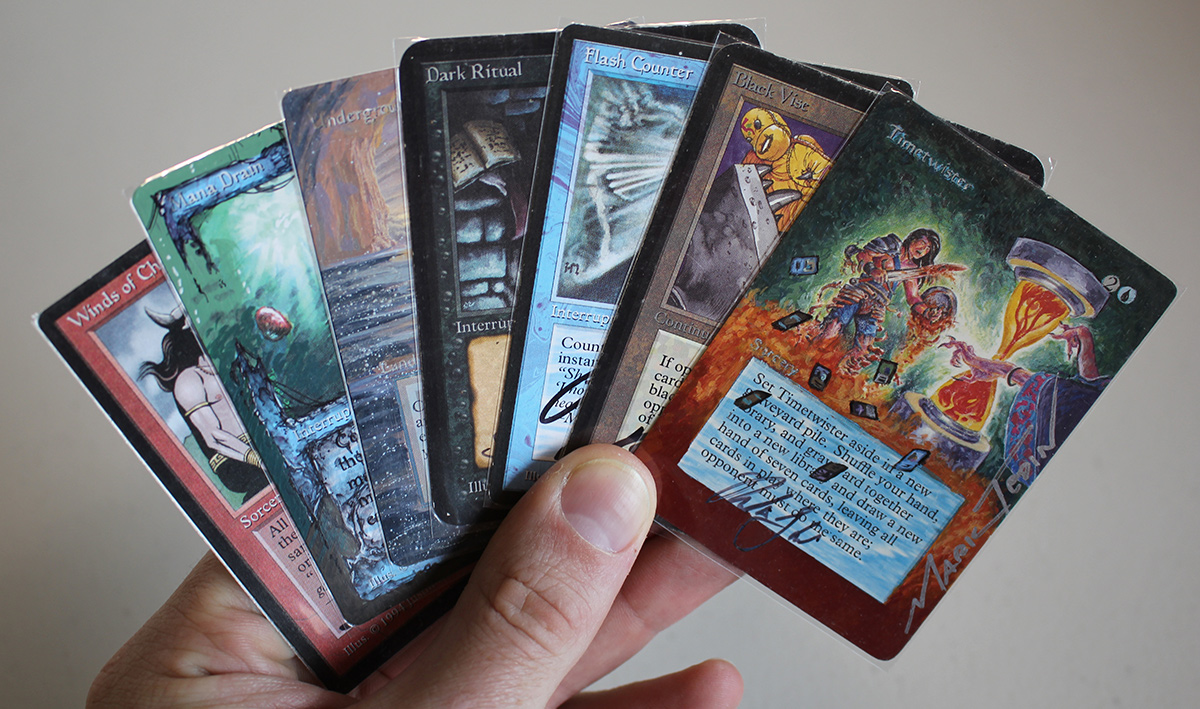
Lots of gas, but not enough mana to cast it. While we can cast a first turn Black Vise and then hope to draw mana to play, that’s probably not good enough. This deck has a good amount of card advantage to recoup mulligans, so I’m flushing this for a fresh six.
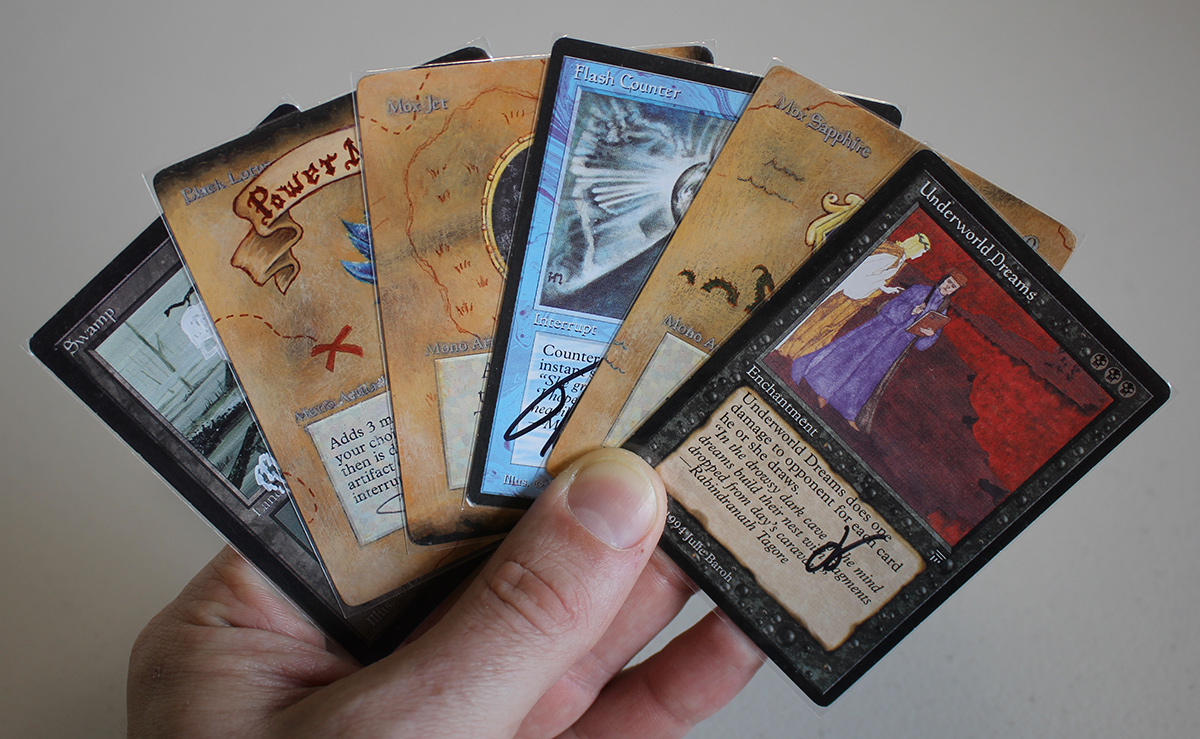
This hand contains plenty of fast mana, and the ability to cast Underworld Dreams on the first turn, along with the mana and counterspell to protect it from Counterspell or Disenchant. While this hand lacks any drawing power (yet), it is certainly good enough to keep, and hope to draw in to basically any action spell over the course of the next few turns.
Opening Hand 2
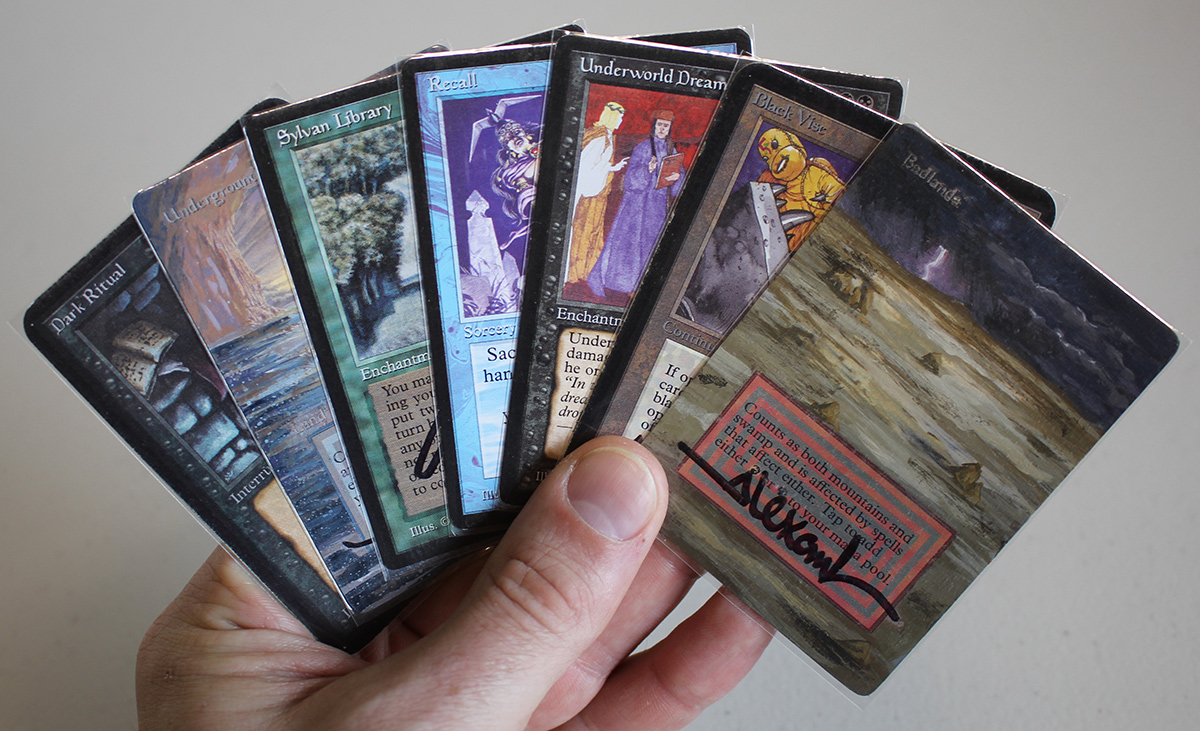
This hand has mana, Dark Ritual, and a couple of kill conditions we can cast on turns one and two. While we lack the mana to cast Sylvan Library yet, we can already map out our first couple of turns with Black Vise in to Ritual and Dreams, which gives us time to draw more mana and gas.
Opening Hand 3
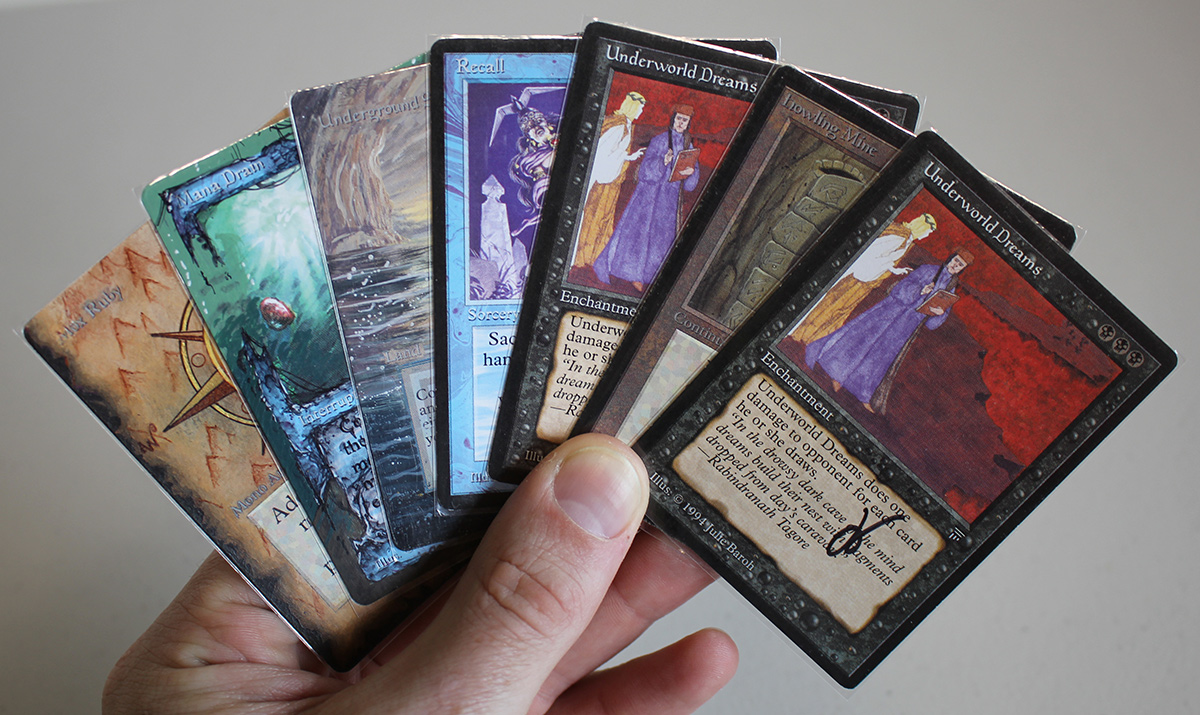
We can cast a first turn Howling Mine, and nothing after that. While the temptation is there to keep this (especially if on the draw) and hope to find more mana, the presence of a double blue and three triple black mana spells in the hand is a big turnoff, so I’m going to send it back and hope for a better six.
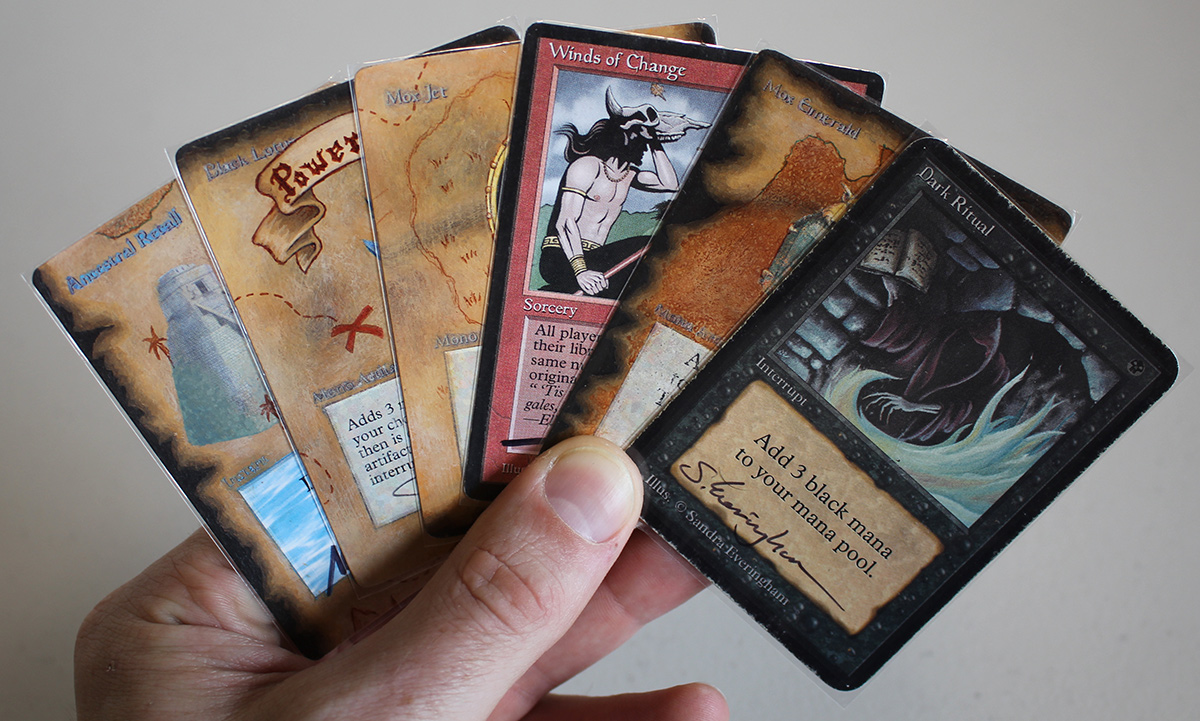
With Lotus, Moxen, Ritual, and draw spells, this hand seems nice, but has a critical flaw in that it doesn’t (yet) have any lands. Being that we can cast Ancestral Recall with Lotus, and then basically cast anything else we draw, I’m probably keeping this one, and slow playing it if able, meaning that I’d prefer to draw in to a land before casting Ancestral, and will give it a turn or three to develop, based on what my opponent is doing.
Opening Hand 4

This hand lacks land drops beyond Volcanic, but the presence of Black Lotus means that we can cast Underworld Dreams and Black Vise on the first turn. If we’re on the play that is massive, and can follow up with Winds of Change on the second turn to not only deal damage, but to roll the dice on a better remaining hand. I’ll keep it, and if we draw a green source on the next turn, all the better, as we’ll be able to cast Sylvan Library.
Opening Hand 5
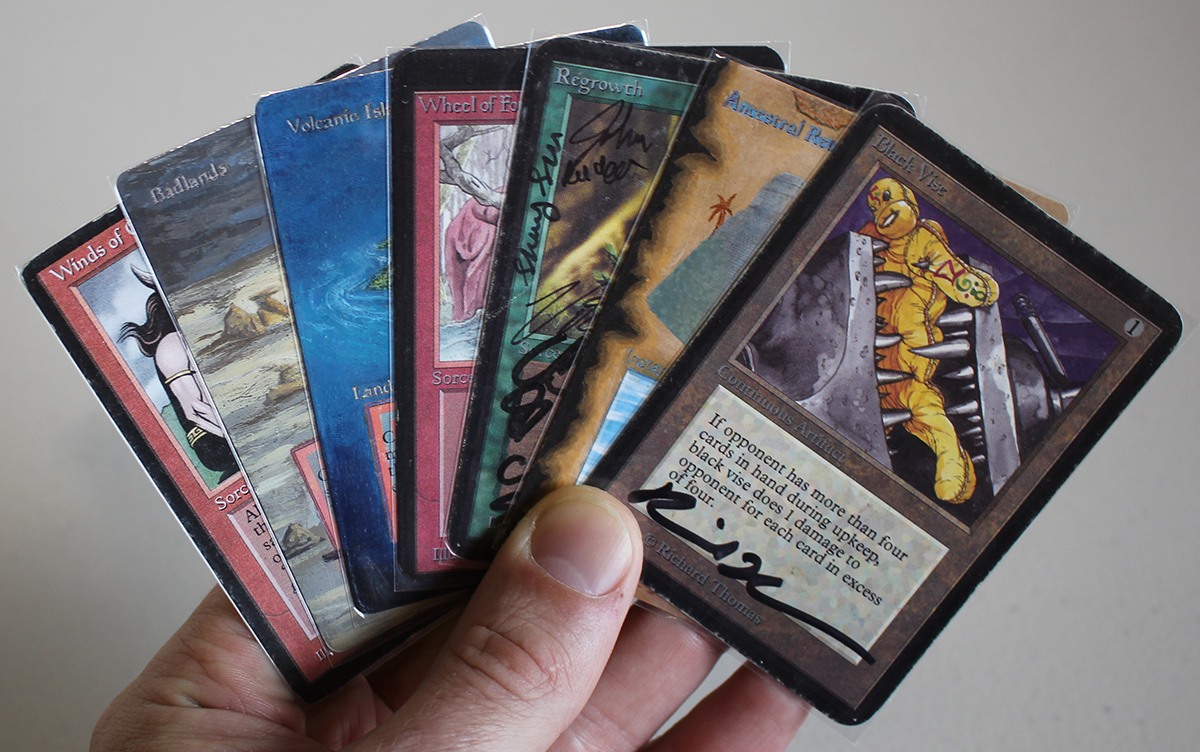
With mana, Black Vise, and powerful restricted cards, this hand is a keep. Depending on what the opponent does, or if we’re on the play or draw, I’m likely to lead with Black Vise on the first turn, and follow up with Ancestral Recall on the next turn, so that I hopefully don’t have to discard any resources. Regrowth and Winds of Change (or Wheel of Fortune) are likely to help win the game in short order.
Opening Hand 6

The mana in this hand is weak, but it can cast Howling Mine, Black Vise, and Regrowth in some order, with the allure of efficient protection if we draw blue mana. Unlike the hand above that contained a first turn Howling Mine play, I’m going to keep this one, simply because this doesn’t have the same stringent mana requirements, and Howling Mine is likely to deliver something of substance (which is basically everything in our deck at this point).
Opening Hand 7
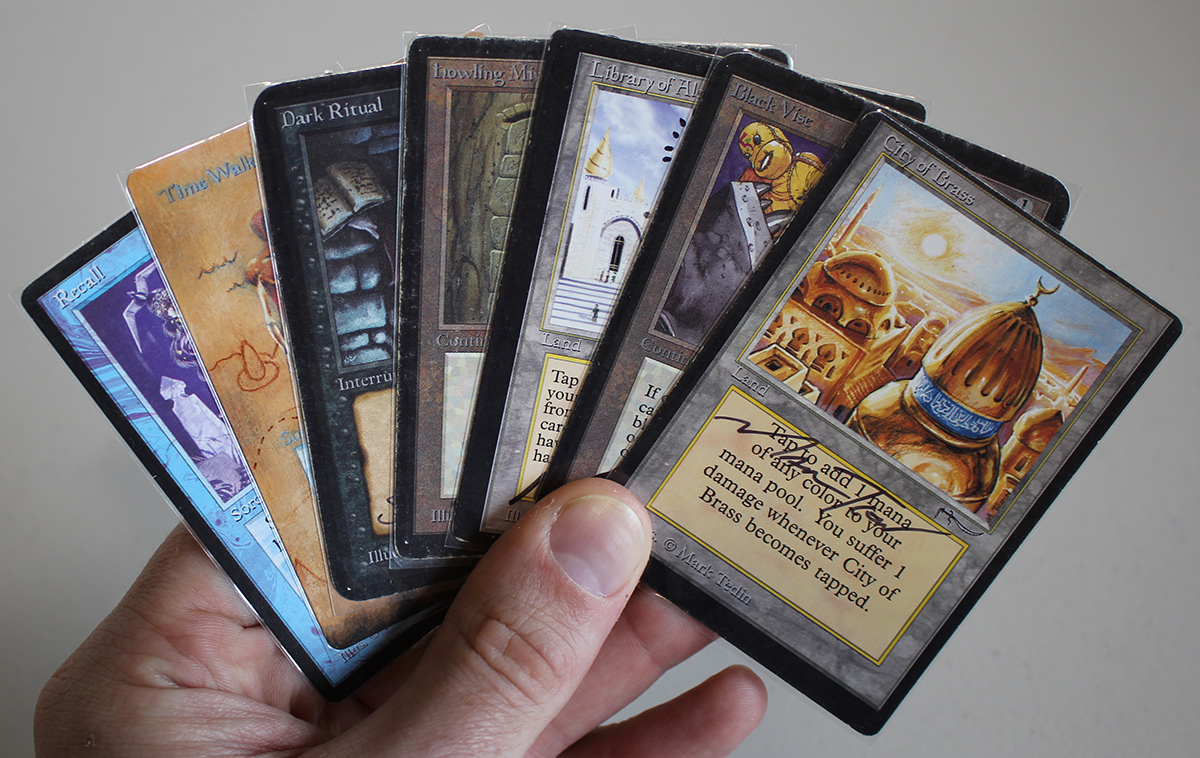
With mana and Library of Alexandria present in this opener, this is a snap keep. I would likely slow play this hand and make the opponent deal with Library first, and if they do you have a ton of synergy in Howling Mine, Black Vise, Time Walk, and Recall for further destruction. This is a great hand, as Recall will only be fueled by Howling Mine, but can bring back Time Walk and even Library, should they have a Strip Mine.
Opening Hand 8
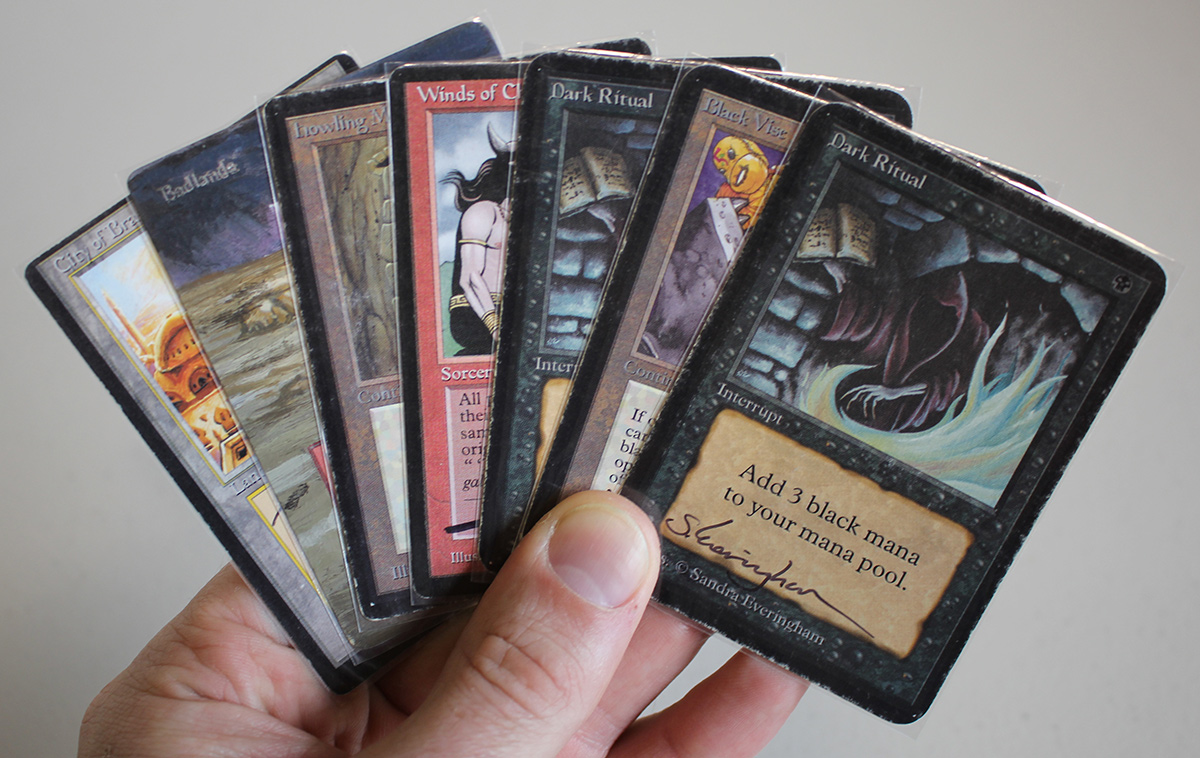
This hand is not very impressive, but may very well be able to slowly grind the opponent out. The natural line of play here would be a first turn Black Vise, followed by a second turn Howling Mine. Depending on what is drawn in the first few turns, you can use Winds of Change to potentially draw in to more needed gas, or to combo off with Underworld Dreams if it is drawn (and Dark Ritual is already in hand to easily be able to cast it). I’ll keep it.
Opening Hand 9
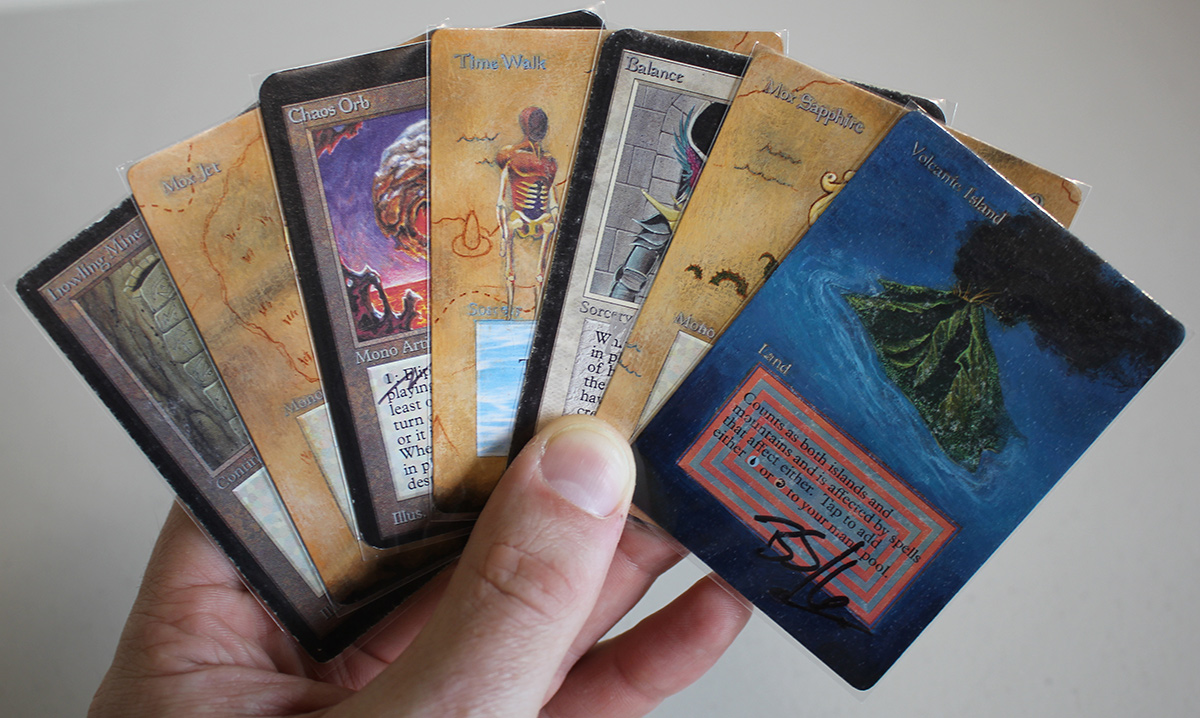
This hand is better than it appears at first blush. While it only contains one land, it contains the two most important Moxen to the deck, and easily casts a first turn Howling Mine with a second turn Time Walk (which combos nicely when you’re already drawing extra cards with Howling Mine), or it has the option to both cast and activate a first turn Chaos Orb, should you need it in an emergency to deal with something like an opposing Library of Alexandria or Underworld Dreams. Balance just serves as an additional opportunity to do something broken, or horde off an opposing army, should we find the requisite mana.
Opening Hand 10
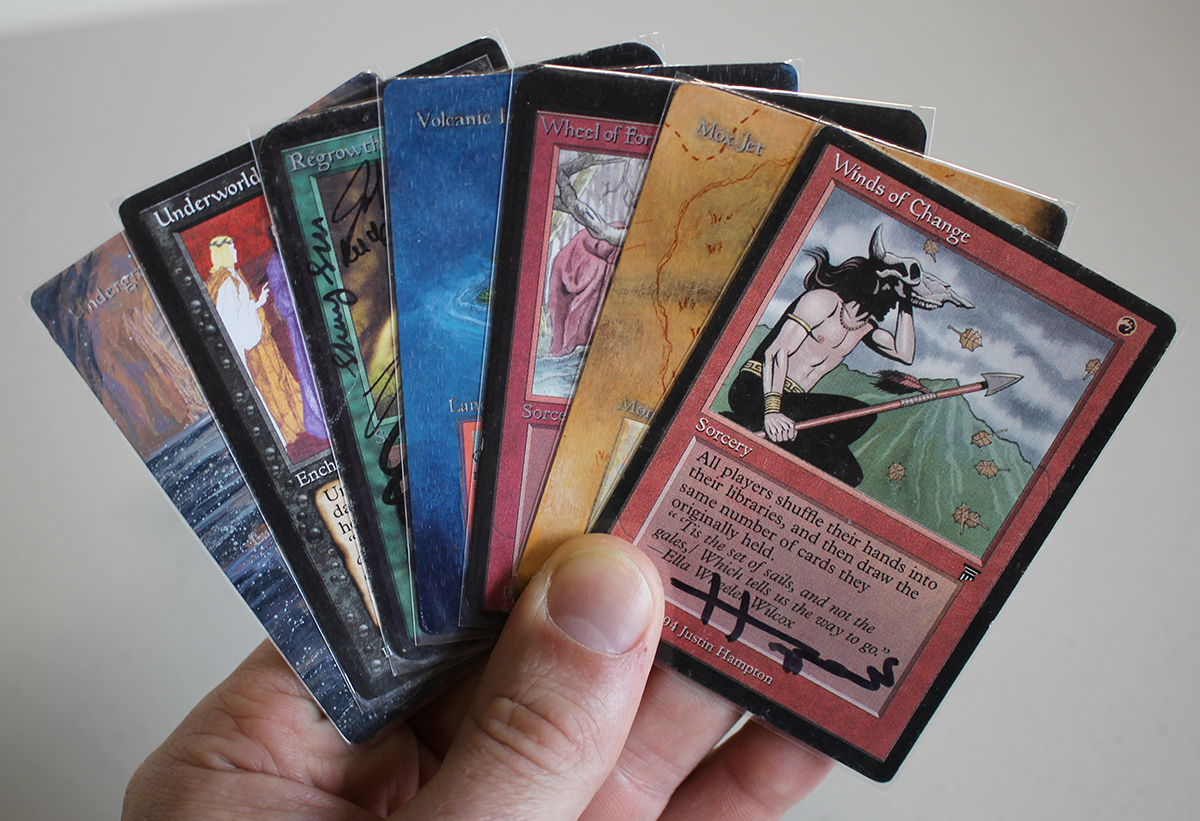
This hand has mana, combo pieces, and draw spells. While we don’t yet have the mana to cast Underworld Dreams, I’d probably keep this and play it slowly. If the opponent does anything to really press our case, we can always cast Winds of Change (or Wheel of Fortune) to hit the eject cord and dig for answers or gas.
Concluding Thoughts
If you are a fan of combo decks in Magic, this is a great starting point for an Old School 93-94 combo strategy that affords you both fun and power. This version doesn’t translate very well to a budget friendly build however, because the Moxen and especially blue Power are so essential to the deck. I would seek a more black-red heavy build if trying to go the budget route.
Stay tuned to Eternal Central for more sick 93-94 brews all month long. Thanks for reading.

